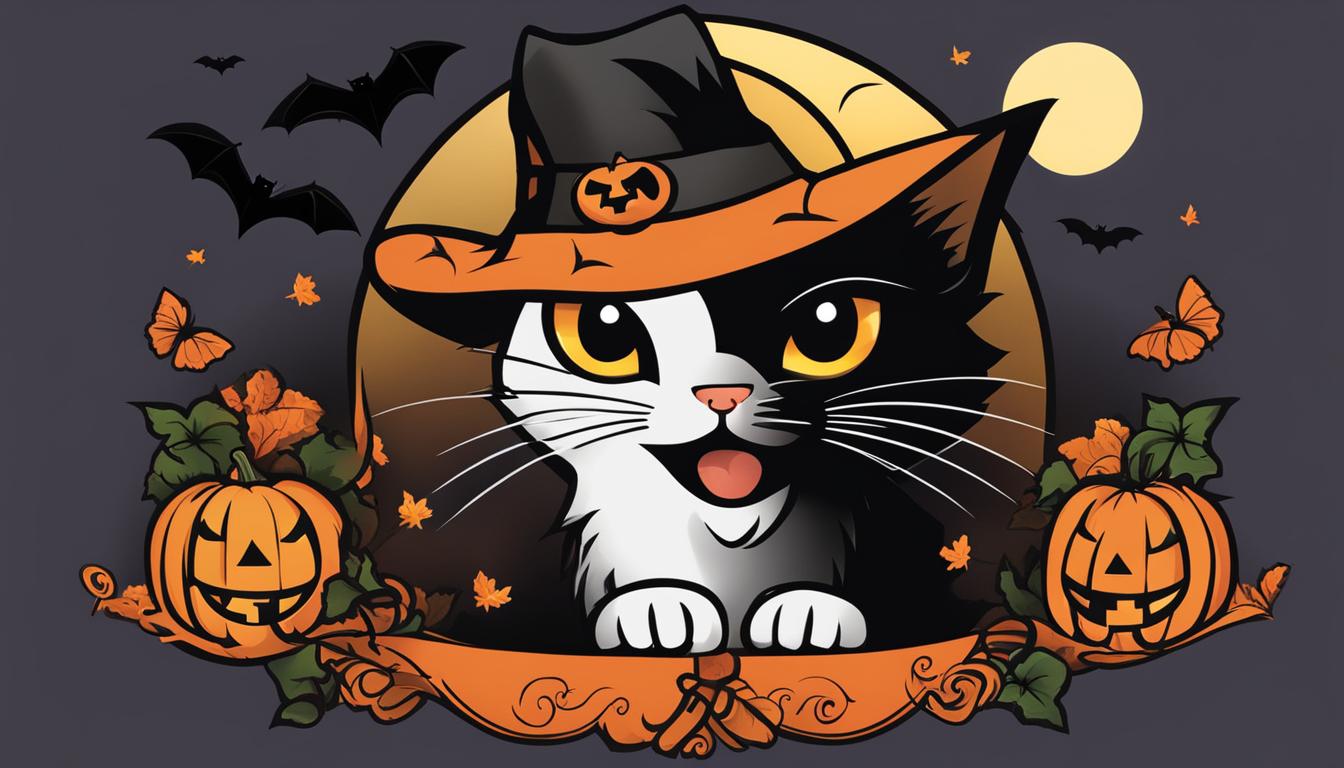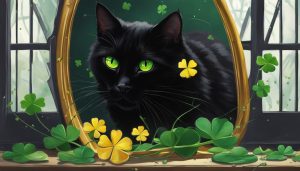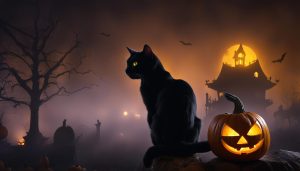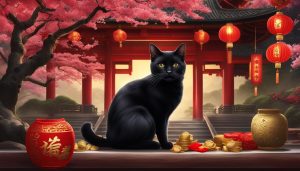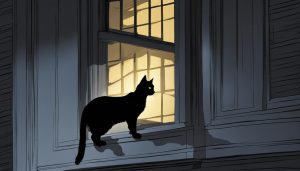Halloween, with its roots in pagan beliefs, has developed a variety of traditions and symbols associated with good luck. These traditions date back centuries and have been influenced by Celtic folklore, medieval myths, and religious practices. Understanding the significance behind these symbols can add an auspicious touch to your Halloween celebrations. Let’s explore what is considered good luck on Halloween and the symbols associated with Halloween fortune.
Contents
- 1 Black Cats – Symbols of Good Luck or Bad Omens?
- 2 Jack-O’-Lanterns – From Sinister Fable to Guiding Lights
- 3 Spiders and Bats – Creepy Crawlers with Symbolic Meanings
- 4 Witches and Cauldrons – The Pagan Origins of Halloween
- 5 Conclusion
- 6 FAQ
- 6.1 What are some symbols of good luck on Halloween?
- 6.2 Why are black cats associated with Halloween?
- 6.3 What is the story behind Jack-O’-Lanterns?
- 6.4 Why are spiders and bats associated with Halloween?
- 6.5 What is the significance of witches and cauldrons on Halloween?
- 6.6 How can understanding the symbolism behind Halloween traditions add meaning to the holiday?
- 7 Source Links
Key Takeaways:
- Halloween is steeped in tradition and symbolism
- The cultural context is important in interpreting the meaning behind symbols
- Black cats can be seen as both good luck and bad omens on Halloween
- Jack-O’-Lanterns serve as both festive decorations and guiding lights
- Spiders and bats add intrigue to Halloween traditions
- Witches and cauldrons have pagan origins and deeper meanings
- Understanding the history and beliefs behind these symbols enhances Halloween festivities
Black Cats – Symbols of Good Luck or Bad Omens?
Black cats, with their mysterious aura, have long been associated with superstitions and beliefs, especially during Halloween. While they are often seen as symbols of bad luck in many cultures, they are also considered signs of good luck in others. The contradictory beliefs about black cats stem from their historical and cultural significance.
In European folklore, black cats were associated with witches and witchcraft, particularly during the Dark Ages and the era of witch hunts. Black cats were believed to be witches’ familiars, aiding them in performing magic spells. The negative association with black cats was perpetuated by the superstition that crossing paths with them would bring misfortune.
However, in other cultures such as Ireland, Scotland, and England, black cats are considered to bring good luck. They are seen as spiritual guardians and protective creatures. Crossing paths with a black cat is believed to bring positive energy and ward off evil spirits.
| Country/Culture | Belief |
|---|---|
| American and European | Symbol of bad luck, associated with witchcraft and misfortune |
| Ireland, Scotland, and England | Symbol of good luck, believed to bring protection and positive energy |
“While black cats may be seen as omens of bad luck in some cultures, others view them as symbols of good luck and protection.”
Understanding the cultural and historical context helps us interpret the meaning of black cats on Halloween. Whether you perceive them as symbols of good luck or bad omens, black cats continue to captivate our imaginations and add an air of mystery to the Halloween season.
Jack-O’-Lanterns – From Sinister Fable to Guiding Lights
The tradition of Jack-O’-Lanterns has a fascinating origin story that adds to the mystical allure of Halloween. According to an old Celtic fable, there was a drunken farmer named Jack who managed to outsmart the devil not once, but twice. After Jack’s death, he was unable to enter heaven due to his sinful ways, and the devil, still holding a grudge, denied him entry into hell as well. Left to wander the darkness in purgatory, Jack used a turnip that he carved and hollowed out, placing a burning lump of coal inside as a makeshift lantern to light his path.
Over time, the tradition of carving these lanterns evolved, and pumpkins became the preferred choice due to their abundance and larger size, making them easier to carve and illuminate. Today, Jack-O’-Lanterns serve as both festive decorations and guiding lights on Halloween night. These carved pumpkins are often placed on doorsteps or windowsills to symbolize the spirits of the dead, lighting the way for lost souls to find their way back home.
“The tradition of carving Jack-O’-Lanterns has its roots in an old Celtic fable, where a drunken farmer named Jack used a carved turnip with a burning lump of coal inside to guide his lost soul.”
To create your own Jack-O’-Lantern, you’ll need a pumpkin, a sharp knife, and some creativity. Start by cutting off the top of the pumpkin and scooping out the insides, being careful to remove all the seeds and pulp. Next, use your knife to carefully carve a face or design of your choice into the pumpkin’s flesh. You can make traditional spooky faces, friendly smiles, or even intricate patterns. Finally, place a lit candle or battery-operated light inside the pumpkin, and voila! Your very own Jack-O’-Lantern is ready to light up the night.

The Steps to Carve a Jack-O’-Lantern
- Select a large, ripe pumpkin.
- Cut off the top of the pumpkin and remove the seeds and pulp.
- Choose a design for your Jack-O’-Lantern and sketch it onto the pumpkin.
- Use a sharp knife to carefully carve out the design from the pumpkin’s flesh.
- Place a lit candle or battery-operated light inside the pumpkin to illuminate your creation.
Carving Jack-O’-Lanterns has become a cherished Halloween tradition, offering a creative outlet and a chance to showcase your artistic skills. Whether you opt for a traditional spooky face or put a unique spin on your design, these enchanted pumpkins are sure to add a touch of magic and guiding light to your Halloween festivities.
Spiders and Bats – Creepy Crawlers with Symbolic Meanings
Spiders and bats are among the creepy crawlies that have become synonymous with Halloween. In medieval folklore, spiders were believed to be companions of witches, and their presence was seen as an indication of the witch’s proximity. Spotting a spider on Halloween was thought to signify that the spirit of a deceased loved one was watching over you. Similarly, bats were associated with witches’ familiars and believed to be harbingers of death. Understanding the symbolism behind these creatures adds a touch of intrigue to Halloween traditions.
Spiders in Halloween lore are not just pests to be feared, but rather, they hold a deeper symbolic meaning. They represent protection, mystery, and the thin line between the physical and spiritual realms. The eight legs of a spider are believed to symbolize the eight Sabbats of the pagan wheel of the year, connecting the spider to the cycles of nature and the spiritual significance of each season.
“On Halloween night, when the veil between the living and the dead is thinnest, spiders are said to bring messages from the other side. Their delicate webs are believed to be a portal to the spirit world, and it is customary to leave a small offering for the spiders, such as a piece of food or a shiny trinket, to honor their connection to the supernatural.”
Bats, on the other hand, have been associated with the dark and mysterious corners of the night. Their nocturnal nature and ability to navigate through darkness have made them symbols of intuition, transformation, and rebirth. In ancient Celtic beliefs, bats were seen as guardians of the night and messengers from the otherworld.
So, the next time you come across a spider or catch a glimpse of a bat on Halloween, remember the symbolic significance they hold. Whether they bring messages from the spirit world or represent the mysteries of the night, these creepy crawlers contribute to the enchanting atmosphere of Halloween superstitions.
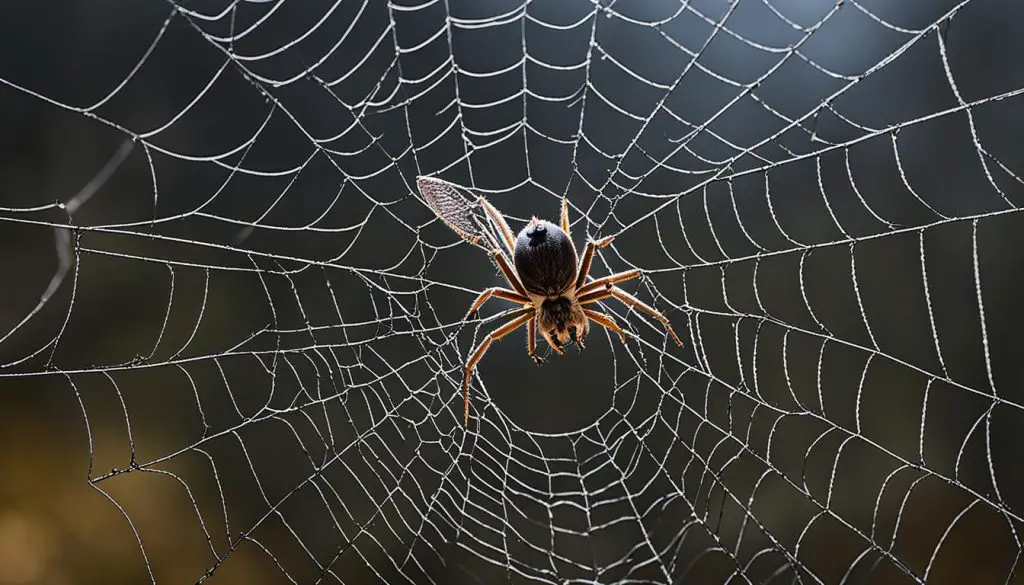
Table: Symbolism of Spiders and Bats in Halloween Superstitions
| Symbol | Meaning |
|---|---|
| Spider | Protection, mystery, spiritual connection |
| Bat | Intuition, transformation, messengers from the otherworld |
Witches and Cauldrons – The Pagan Origins of Halloween
Witches have long been an integral part of Halloween folklore and traditions. The image of a witch stirring a cauldron has its roots in pagan beliefs, where witches were associated with a goddess known as “the crone.” The cauldron, a symbol of the Earth mother’s womb, represented the place where souls awaited reincarnation. It served as a powerful symbol of transformation and the cycle of life and death.
In addition to cauldrons, witches were also believed to use broomsticks to fly. This iconic image originates from medieval myths and the use of hallucinogenic ointments by accused witches. These ointments, made from herbs and plants, were applied to broomsticks, which were then used to apply the substances to the body. The hallucinogenic properties of these ointments were said to induce a feeling of flying or floating, leading to the association of witches with broomsticks.
The pagan origins of witches and their associated symbols provide a deeper understanding of the mystical allure of Halloween. By embracing these traditions, we can connect with ancient beliefs and celebrate Halloween with a sense of wonder and reverence for the cycles of nature.
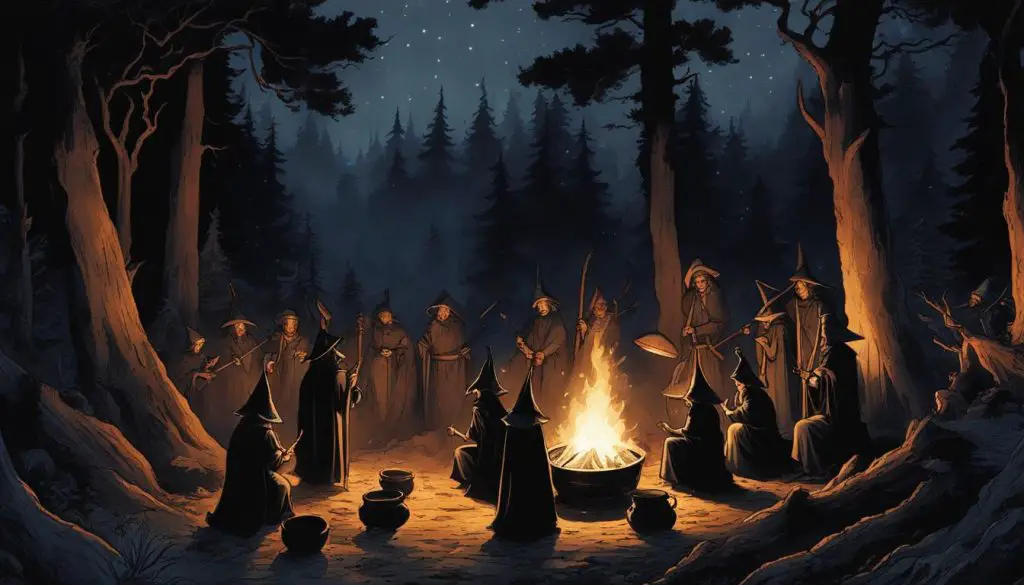
Halloween Symbolism: Witches and Cauldrons
In pagan beliefs, witches symbolize the power of the divine feminine and the wisdom of the crone. They remind us of the cyclical nature of life and the importance of embracing both light and dark aspects of ourselves. Cauldrons, on the other hand, represent transformation, rebirth, and the magic that exists within us.
By incorporating witches and cauldrons into our Halloween festivities, we honor the ancient traditions and connect with the rich symbolism that has been passed down through generations. Whether it’s through dressing up as a witch, carving a cauldron into a Jack-O’-Lantern, or creating a potion-themed centerpiece, we can infuse our celebrations with the energy of magic and transformation.
| Symbol | Meaning |
|---|---|
| Witches | Divine feminine energy, wisdom, cycles of life and death |
| Cauldrons | Transformation, rebirth, magic, the womb of the Earth mother |
As you embrace the symbolism of witches and cauldrons this Halloween, take a moment to reflect on the ancient beliefs that have shaped these traditions. Whether you see them as powerful figures of magic or symbols of female empowerment, their presence adds a touch of enchantment to this bewitching holiday.
Conclusion
Halloween is a fascinating holiday that is steeped in traditions, superstitions, and symbols associated with good luck. From the mysterious black cats and the glowing Jack-O’-Lanterns to the enigmatic witches and their bubbling cauldrons, each symbol holds its own significance and contributes to the mystical allure of Halloween.
By understanding the history and beliefs behind these symbols, you can fully embrace the traditions and celebrate Halloween with a sense of auspiciousness. Recognizing the cultural and historical context allows you to appreciate the deeper meanings and enrich your Halloween festivities.
So as you prepare for your Halloween celebrations, adorn yourself with the symbols of good luck and let fortune be your companion. From the flickering candlelight to the haunting shadows, may your Halloween be filled with joy and an abundance of good luck. Embrace the Halloween luck beliefs and superstitions, and let the magic of this bewitching holiday enchant you!
FAQ
What are some symbols of good luck on Halloween?
Some symbols of good luck on Halloween include black cats, Jack-O’-Lanterns, spiders, bats, and witches’ cauldrons.
Why are black cats associated with Halloween?
Black cats are associated with Halloween due to their historical connection to witchcraft and superstitions. While they are often seen as symbols of bad luck in many cultures, they are also considered signs of good luck in others.
What is the story behind Jack-O’-Lanterns?
The tradition of carving Jack-O’-Lanterns has its roots in an old Celtic fable about a farmer named Jack who tricked the devil. He used a carved turnip with a burning lump of coal inside as a lantern to guide his lost soul. This tradition evolved into carving pumpkins, which serve as festive decorations and guiding lights on Halloween night.
Why are spiders and bats associated with Halloween?
In medieval folklore, spiders were believed to be companions of witches, and their presence was seen as an indication of the witch’s proximity. Spotting a spider on Halloween was thought to signify that the spirit of a deceased loved one was watching over you. Similarly, bats were associated with witches’ familiars and believed to be harbingers of death.
What is the significance of witches and cauldrons on Halloween?
Witches play a central role in Halloween folklore and traditions. The image of witches stirring cauldrons comes from pagan beliefs, where witches were associated with a goddess known as “the crone.” The cauldron symbolized the Earth mother’s womb, where souls awaited reincarnation. The use of broomsticks by witches to fly originates from medieval myths and hallucinogenic ointments used by accused witches.
How can understanding the symbolism behind Halloween traditions add meaning to the holiday?
Understanding the history and beliefs behind symbols such as black cats, Jack-O’-Lanterns, spiders, bats, witches, and cauldrons allows us to embrace the traditions and celebrate Halloween with a sense of auspiciousness and intrigue. It adds to the mystical allure of the holiday and enhances the overall experience.

